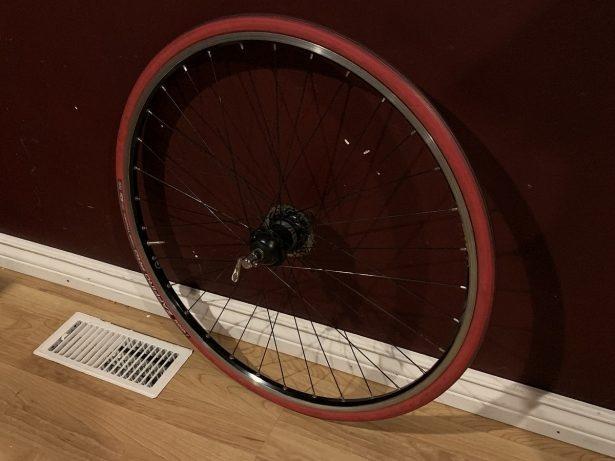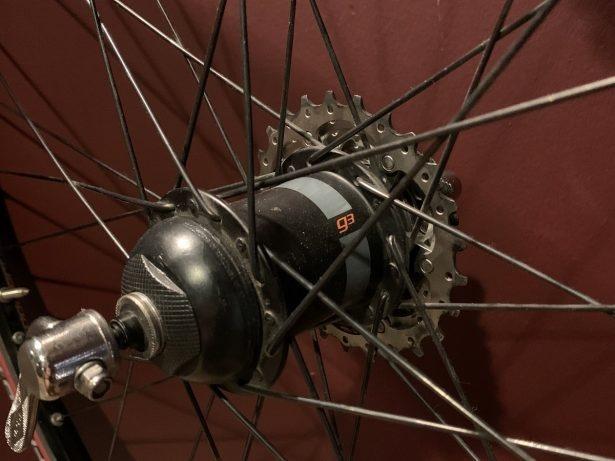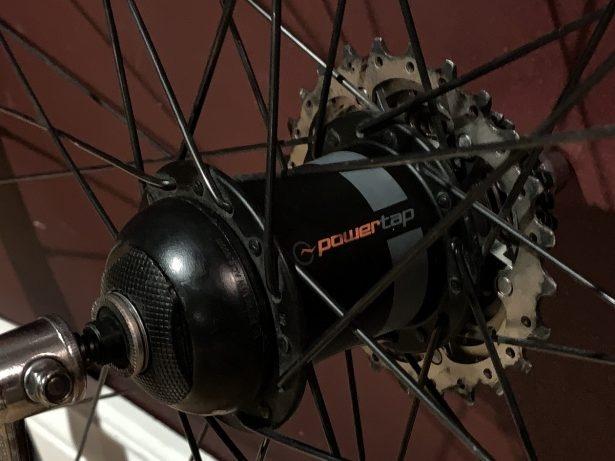Powertap G3 Power Meter Review
-
Total rating
Summary
All in all, this is a pretty great power meter. Precise, reliable, and easy to use, we highly recommend it. The biggest downside is that if you plan on using a second wheelset, you won’t have any power data.
Pros
- Cost-effective
- Easy set-up
- Reliable and accurate to +/- 1.5%
- Great Durability
Cons
- Switching between wheelsets you won’t have power data
- Not maintaining your chain slightly affects power reading
- Heavier than most other Power Meters
User Review
( votes)The Powertap G3 is a hub-based power meter, aimed at riders who want a cost-effective but reliable power meter. The hub is offered pre-laced into a full wheelset, or as an individual unit.

In our testing, the hub was precise, reliable and overall had no major complaints. Durability was great, and we never had any issues with quality after a couple of hard seasons. The downside however of all hub-based meters, is that if you use separate wheels for racing and training, you won’t have power on your second wheelset.
Set-Up
Setting up the power meter is very simple. Before you begin the installation, it may be a good idea to check for any software updates through the PowerAgent application (covered later).
Once out of the box, just transfer over the essentials such as your cassette and tires, and you’re ready to begin the pairing process. To begin the pairing process, all you have to do is backpedal the cranks a couple of times, and it should appear ready to pair on your ant+ compatible device.
Next time you want to use it, all you should have to do is a couple of backpedals, and it should automatically connect.
Features
The hub has a few small features which make a positive experience for the user. First off, in addition to the power measurement, since it’s hub-based it can also give speed readings to your cycling computer.
Another bonus about the Powertap hub is that it shows your virtual cadence, which is impressively accurate for a hub device. This means no more ugly wires or sensors being routed around your frame.
One of the features that it doesn’t have, however, is power balance. This is a measurement of which side of your pedal stroke is doing more work, which is a helpful tool to maximize your power output over time.
Because strain gauges read differently when the temperature varies, Powertap has also built in an auto zero feature, which constantly re-calibrates the device when you free-wheel to ensure you’re only getting the most precise data. This is very helpful because it makes your data much more consistent throughout different rides and temperatures.
Quality
The overall level of quality of the hub unit was surprisingly high. After roughly 10,000 km, the bearings still felt smooth and had lots of life left. The seals around the electronics had also kept the elements out, which is very important on any wet rides.
The biggest concern about quality is the weight of the wheelset. At 325g for the hub, and 1044g for the full rear wheel, it’s not exactly the lightest-weight option out there, but I certainly wouldn’t call it heavy. In this case, I believe the extra weight contributes to the longevity and durability of the power meter.

If you’re in the market for a power meter that has to put up with a lot of abuse, I strongly recommend the PowerTap for this reason.
Durability
As an all-weather rider who puts a lot of miles on the road, durability is a must-have. After many long rides in varying conditions, the only maintenance that has had to be done is very minimal wheel trueing, and replacing the battery. If I ever got unrealistic readings, all that needed to be done was a battery swap, then it was good as new.
Many of the power meters out there have quality issues, but I can say confidently that the PowerTap is one of the most bomb-proof meters out there.
Electronics
In terms of battery life, I’ve found you get about 150-200 hours per battery. Swapping out the battery is by no means challenging, but it’s much harder than crank-based meters. You first must remove the wheel, and pop off the end cap with a special tool (I’ve found I can usually do it with my hands). What you’ll then find is the internals of the hub all sealed off with some kind of resin or glue.
Updating the software on the hub is very easy once you’ve removed this cap, so it’s best to do these things at the same time. To do this you need to download the PowerAgent application, then plug the cap in and hit update.
Accuracy
Being hub-based and also a strain gauge, many engineers have shown why the PowerTap is one of the most accurate power meters available. The G3 model boasts an impressive accuracy of +/- 1.5%.
The issue with these hub-based models is that because the reading is taken from the hub, it doesn’t account for any power lost through a poorly maintained chain. If your chain is very gritty or not running smoothly, you may see a small watt decrease in your data.

Verdict
The Powertap G3 is a very reliable power meter. If you want to make just one purchase on a power meter to use for a long time, I recommend it. If you like to switch wheelsets between races and training, then this may not be the best choice. If you only need one set of wheels, this shouldn’t be a problem for you. Once you learned to maintain the wheel between battery swaps and software updates, the simple design is amazing.
All in all, this is a pretty great power meter. Precise, reliable, and easy to use, we highly recommend it. The biggest downside is that if you plan on using a second wheelset, you won’t have any power data.

Cycling has been a passion of mine ever since I was little, and has grown into my job in a bike shop. My time on the bike is divided equally between mountain and road, but regardless of what I’m on, I enjoy poaching KOMs. Maybe a little bit too much sometimes.

![Xiaomi Portable Electric Air Compressor 1S Review [Find Out If It’s Worth The Money] Xiaomi Portable Electric Air Compressor 1S Review [Find Out If It’s Worth The Money]](https://biketestreviews.com/wp/wp-content/uploads/2023/07/xiaomi_air-min-500x300.jpg)
